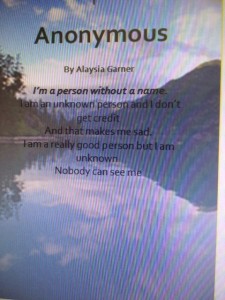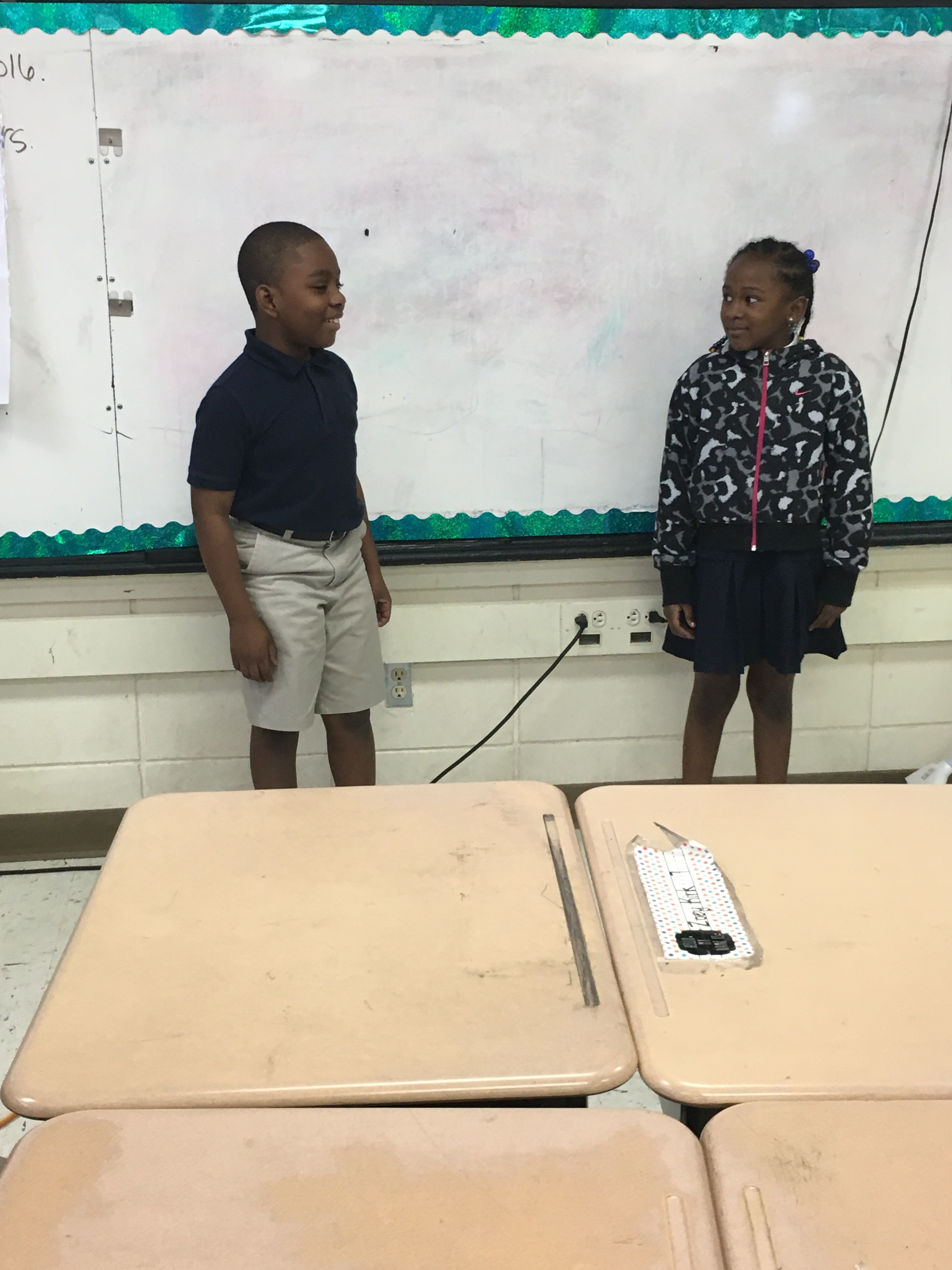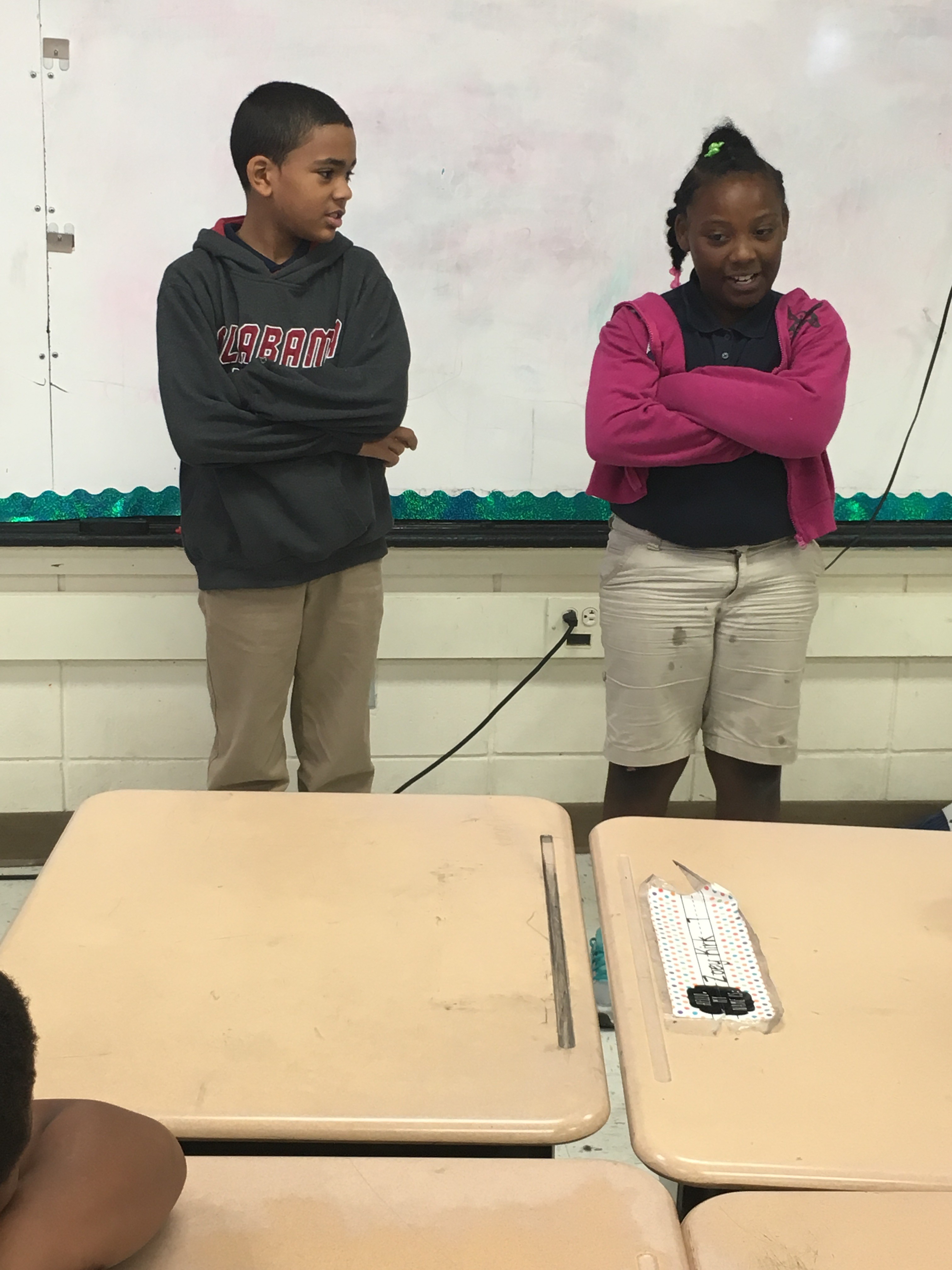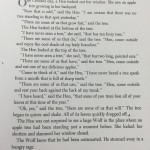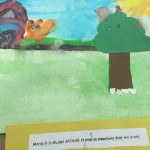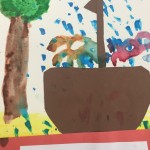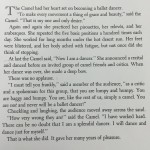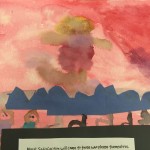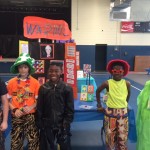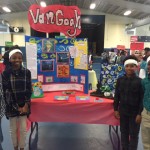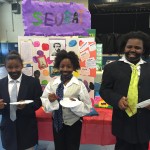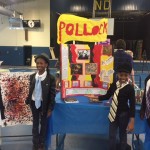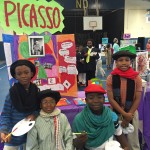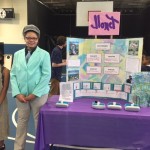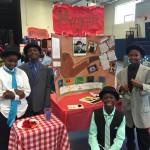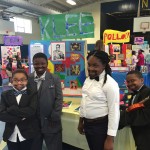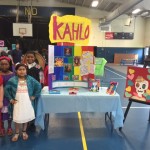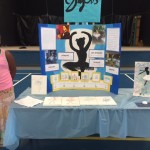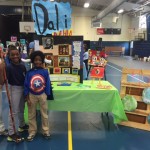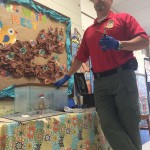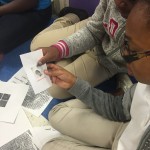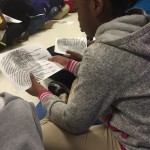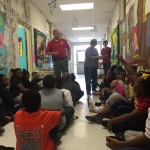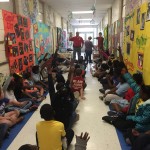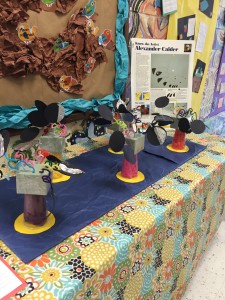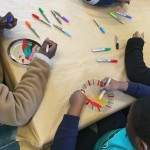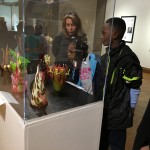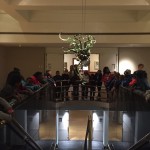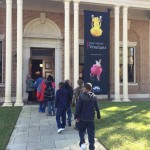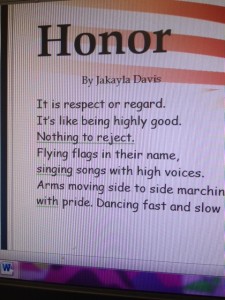This week, students have been learning about combining nouns in order to make compound subjects. In order to increase student understanding, we prepared an Arts Integration lesson involving the showing of emotions. Students were told that the way a character shows emotion lets the audience know what that character is thinking. To begin this lesson, we read The Way I Feel by Janan Cain. Throughout the book, the main character is experiencing almost every kind of emotion (happy, sad, angry, frustrated, proud, thankful, etc.), but later tells readers that his emotions are what makes him unique. After reading the book, students were paired up and given an emotion card. With the emotion card, they also received a predicate of a sentence to practice reading using that emotion. Students then filled in their names as the subjects to make two simple sentences. Once they read their name and the predicate using their assigned emotion, they were to combine both subjects and the predicate to create a compound sentence. This lesson also taught students the roles of performers and audiences. After students were finished performing, the audience had to guess which emotion they were portraying.
Author Archives: Casey Watts
Narrative Elements Come to Life!
While learning about narrative elements (Characters, Setting, Plot, Theme, Moral, etc), the students completed an arts integration lesson involving the techniques of famous artist, Henri Rousseau. Rousseau painted scenes that clearly show the use of background, middleground, and foreground. The students learned how the artist would have to complete the background first, the middleground second, and the foreground would be the final step in the creative process. Students applied this concept to narrative elements. First you must know the characters and setting when reading the story. They are the background. Next, you learn the plot, the conflict, and resolution. This is the middleground of the story. Finally, once you have read the entire story, you can determine the theme and moral. This is like the foreground of the story. These elements only come to light in the final stages.
So the students read a fable in a group, completed a chart stating the narrative elements from the fable, and then used a variety of art materials including watercolor and construction paper to creatively show the narrative elements in the background, middleground, and foreground of their artwork.
School Supplies
The beginning of the 2016-2017 school year is almost here!! AAHH!! 🙂
We are getting excited about all of our new fourth graders coming in. If you haven’t seen the school supply lists, they are up on the district website (see link below). We will need all of these supplies beginning on the first day – Thursday, August 4th – so make sure you have them ready, please!
http://www.laurelschools.org/sites/laurelschools.org/files/nora_davis_magnet_2016-17.pdf
Famous Artists Come to Life!
This past Monday we held our annual 4th grade Famous Artist Living Wax Museum. This unit is a culmination of a month long unit where the teacher steps back and facilitates the students as they delve into the world and minds of famous artists from both past and present. The students worked in groups to complete the following for their wax museum presentation:
- Researched the artist using the internet, encyclopedias, and various informational texts.
- Wrote a biography and a reflection about the author and his or her work.
- Created a timeline illustrating important events in the author’s life.
- Critiqued one of the artist’s paintings using the art criticism method of describing, interpreting, analyzing, and evaluating.
- Wrote a first person point of view script based on important events and the significance of the artist.
- Created a visual background to host the above materials.
- Recreated one of the artist’s pieces of work individually.
- Recreated one of the artist’s pieces of work as a group where all opinions were considered.
See each group and their artist represented in the pictures above.
Mystery and Investigation
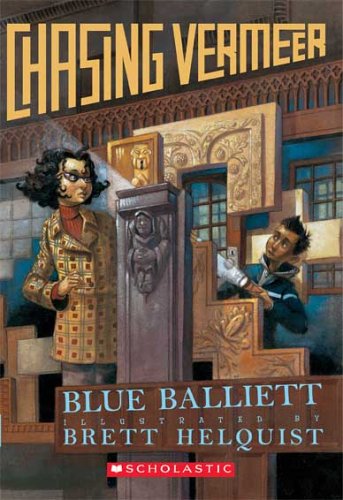
The students have been reading a crime investigation mystery novel the past few weeks called Chasing Vermeer. The novel has been very exciting, and we can’t wait to figure out “who did it?” While we are waiting though, we had the fortunate opportunity for one of our district resource officers, Officer Kevin Flynn, to come by and teach us about fingerprints and investigations. Officer Flynn has extensive knowledge about being a detective and compiling evidence for an investigation. Officer Flynn talked to the students about how to spot different points on fingerprints, the different types of fingerprints, what fingerprints are made of, and he even showed the students how to dust for fingerprints and lift fingerprints off of objects using a fingerprint lifting chamber. The students found it all very exciting, and they can’t wait to do some more investigating!
Moon Phase Stabiles
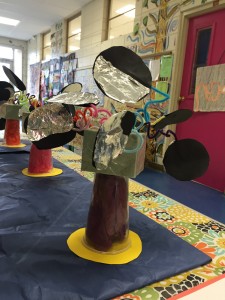 The students learned about famous artist Alexander Calder. Calder is famous for creating artistic mobiles that hang from ceilings, but also for creating stabiles which are stationary mobiles. Calder explained the difference between stabiles and mobiles this way: “You have to walk around a stabile or through it – a mobile dances in front of you.” The students worked in a group to create a stabile to show the eight moon phases that they had been studying in class. The students used aluminum foil on black circles to show the different amounts of light that is reflected from the Sun, creating the moon phases. The students used cups for the stationary aspect of the mobile and pipe cleaners to create some movement within the piece. Pictures do not do these sculptures justice, come by and see them in person!
The students learned about famous artist Alexander Calder. Calder is famous for creating artistic mobiles that hang from ceilings, but also for creating stabiles which are stationary mobiles. Calder explained the difference between stabiles and mobiles this way: “You have to walk around a stabile or through it – a mobile dances in front of you.” The students worked in a group to create a stabile to show the eight moon phases that they had been studying in class. The students used aluminum foil on black circles to show the different amounts of light that is reflected from the Sun, creating the moon phases. The students used cups for the stationary aspect of the mobile and pipe cleaners to create some movement within the piece. Pictures do not do these sculptures justice, come by and see them in person!
Dancing Circuits
The students have been learning about simple, series, and parallel circuits in science. The students used this knowledge to improvise a dance with a group to showcase the parts of a particular circuit and how those parts work within the circuit. The students had to explain what part of the circuit they portrayed in the dance and how they were important to the circuit. See if you can find the connectors, loads, switches, and power sources in our videos. Click the links below to see a video of each circuit dance.
Circuit City!!!
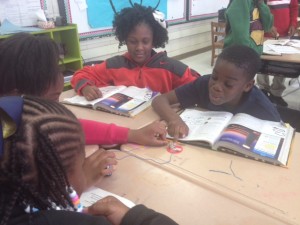 The students have spent time this week learning about circuits. They learned about open an closed circuits, and how electricity works. They even got a chance to experience circuits first hand. They really enjoyed figuring out what makes the light bulb light, and discovering the role of each piece of equipment.
The students have spent time this week learning about circuits. They learned about open an closed circuits, and how electricity works. They even got a chance to experience circuits first hand. They really enjoyed figuring out what makes the light bulb light, and discovering the role of each piece of equipment.
Field Trip Fun
Students traveled to the Lauren Rogers Museum of Arts to visit the Dale Chihuly Venetians Exhibit. Chihuly is famous for his blown glass art pieces and interesting designs. During our visit we learned about Chihuly’s training and the process of glass blowing. After viewing the exhibit, students created their own art pieces by decorating cups and plates and heating them in an oven to create a molded sculpture. Following the field trip, we challenged our students to replicate Dale Chihuly’s work using measurement conversions. Check back soon to see how our replicas turned out!
If you would like to visit the Chihuly exhibit, it will be at the Lauren Rogers Museum in Laurel until June 5th! This exhibit is free to the public!
Vocabulary Poetry
Our students are studying poetry. We are learning about the different types of poetry, as well as the elements of a poem. Students chose a vocabulary word from this weeks list and wrote poems that help emphasize the meaning of the vocabulary word. They did such a fantastic job capturing the meaning of each vocabulary word and expressing it using imagery, figurative language, and rhyme. Here are just a couple of the wonderful poems created: 